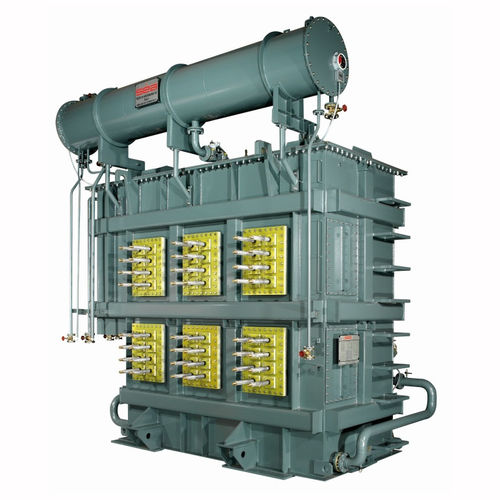Furnaces transformers can be divided in the following categories according to the type of current:
- DC furnaces
- AC furnaces
The range of variation of the load cycles of furnace are quite wide, depending on size and general metallurgical requirements (for instance in melting or refining processes). Melting types have heavy current fluctuations because of arc instability and of charge movement, comparing to the refining ones. The main feature of furnace transformers is that they have primary side with high voltages and low currents and secondary side with low voltages and high currents.
DC Furnaces
In the melting process is used direct current; the transformer is installed combinated with a rectifier that powers the furnace. DC furnace have higher resistance and put into the system less disturbances. In these furnaces there is a specific need to stabilize the arc during the melting phase.Another advantage of DC furnaces is that there is a lower electrode consumption per ton of steel produced; reasons is because the use of one electrode causes less electrical harmonics. DC furnace transformers are used in the melt scrap metal (e.g. steel plants).
AC Furnaces
The AC Furnaces can be divided in:
- EAF (Electric Arc Furnaces)
- Reduction furnaces
- Special furnaces
EAF transformers are suitable for steel furnaces, ladle furnaces (LF) and ferroalloy furnaces.
They work under critical and severe conditions caused by overcurrents and overvoltages generated by short circuits in the furnaces.
Arc furnace transformers are used for melting scrap metal. Usually when there is an EAF there is also an LF that is used to refine the metal melted by the arc furnace.


